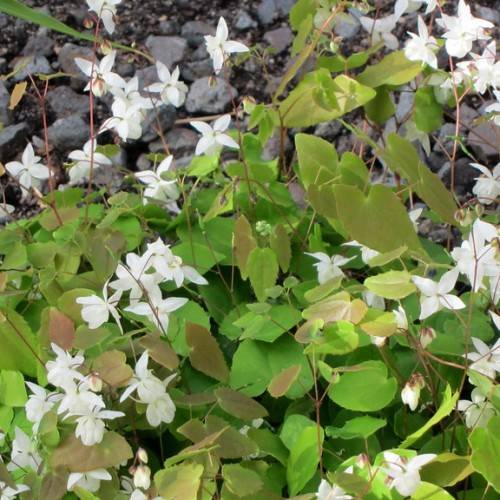
barrenwort
Epimedium x youngianum
Cycle:
Herbaceous Perennial
Watering:
Average
Hardiness Zone:
5
Flowers:
Flowers In Spring
Sun:
Deep shade, Filtered shade, Part sun/part shade
Soil:
Humus rich
Fruits:
Fruits Ready In Fall
Leaf:
Yes
Growth Rate:
Moderate
watering
Barrenwort plants prefer moist, well-drained soil. They should be watered regularly in the spring when the soil is dry. During the hottest parts of summer, water only every 10-14 days. In the fall, water less frequently as the plants are beginning to enter dormancy. Too much and too frequent watering can be damaging to this plant species.
sunlight
Barrenwort (Epimedium x youngianum) is best grown in partial shade, with around 4 to 6 hours of sunlight per day and some additional dappled shade. During the spring and summer months, this plant should remain in dappled shade or light shade, avoiding direct sunlight. In the fall, it can tolerate more direct sunlight, but should still receive some morning or afternoon shade. When in full bloom, this plant can tolerate full sun for short periods of time, as long as the temperatures remain moderate to cool. In hot climates, it is best to keep this plant in the shade.
pruning
Barrenwort is an herbaceous perennial that should be pruned in the late winter or early spring. Pruning this plant removes dead or damaged foliage and encourages new growth. The amount of pruning required will depend on the size of the plant and how much dead or damaged foliage needs to be cut away. Large plants can have around 1-third of the foliage removed, while small plants should have only smaller amounts of foliage removed. After pruning, it is important to fertilize with an all-purpose fertilizer and water the plant thoroughly. This will ensure that the plant can quickly recover from the pruning and add new growth.
